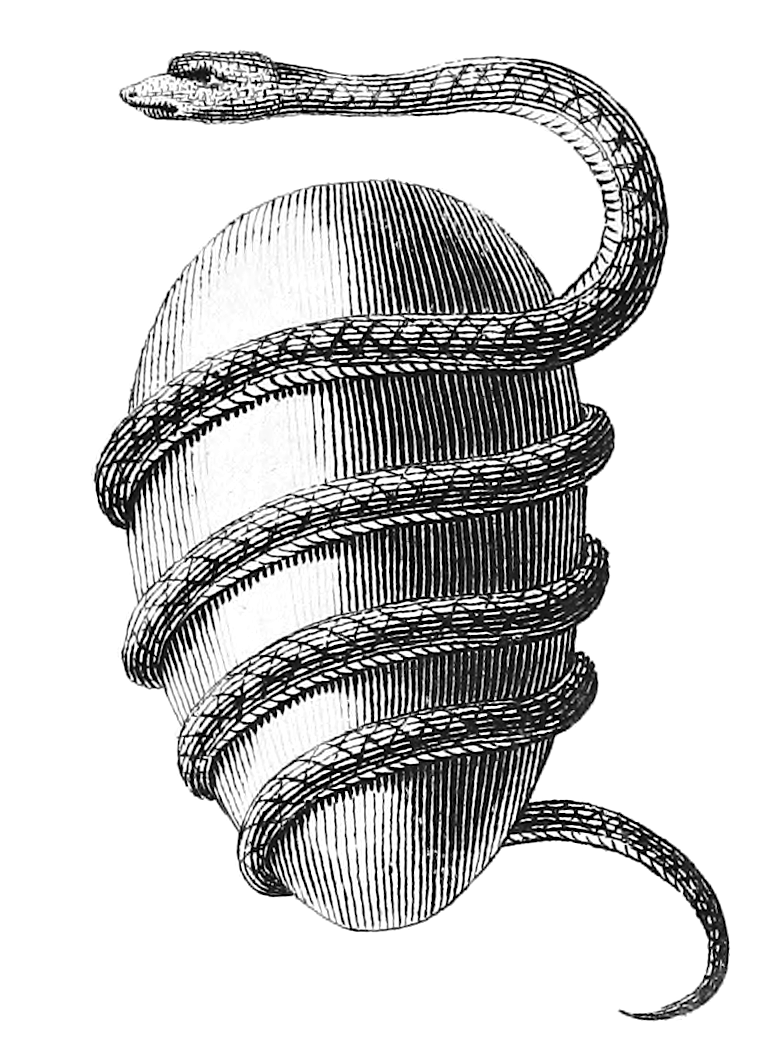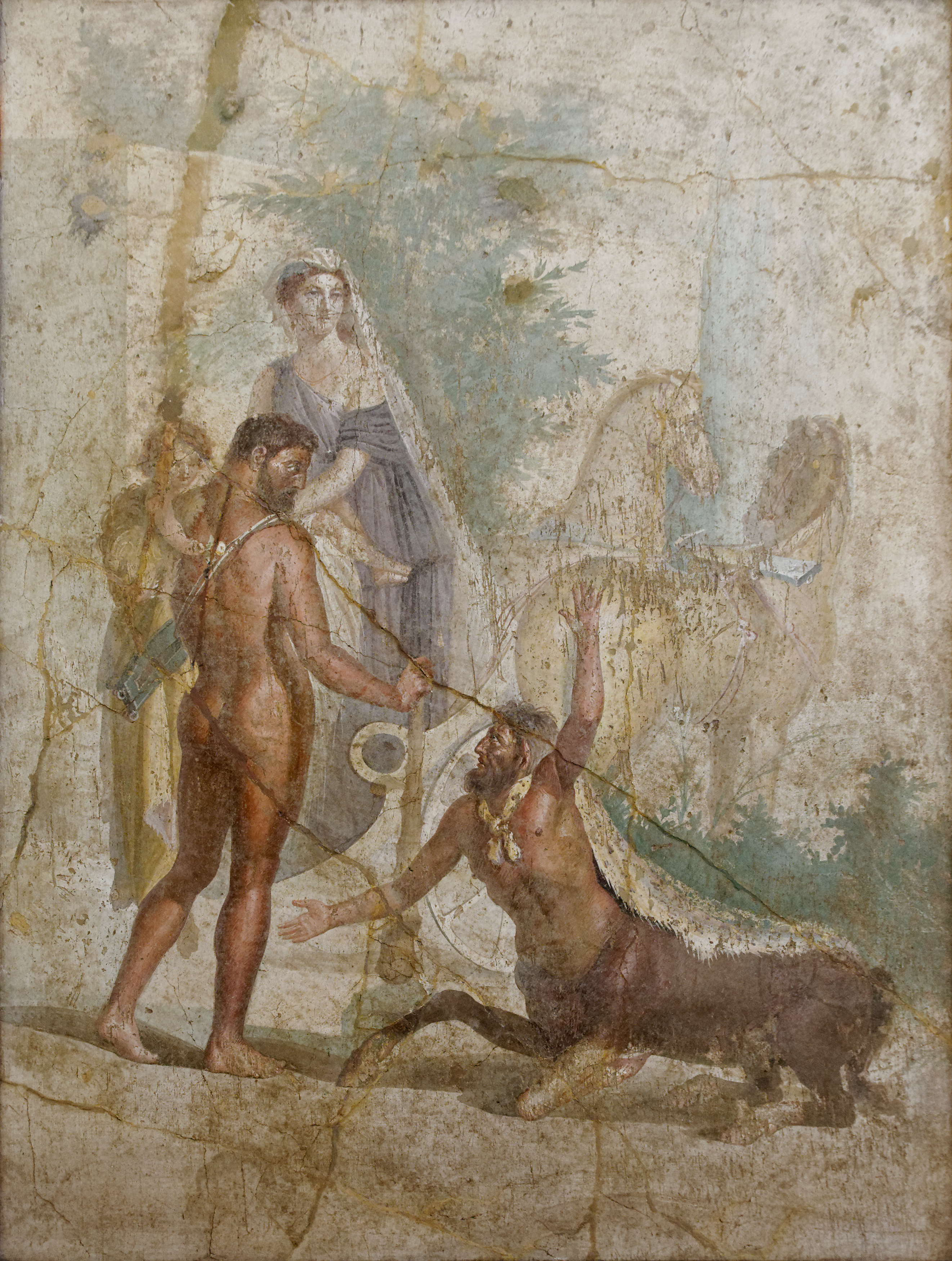|
Lyssa
Lyssa ( ; ), also called Lytta (; ) by the Athenians, is a minor goddess in Greek mythology, the spirit of rage, fury, and rabies in animals. She was closely related to the Maniae, the spirits of madness and insanity. Her Roman equivalent was variously named Ira, Furor, or Rabies. Sometimes she was multiplied into a host of Irae and Furores. In myth, Lyssa features in stories where she drives people insane to their doom. The viral genus ''Lyssavirus'', which includes the causative agent of rabies, was named after this goddess. Etymology Because seeds of alyssum were used (unsuccessfully) to treat rabies, the flower was named after the disease with the prefix in front, meaning without. Thus Lyssa is the etymological origin of the feminine name Alyssa. Family In Euripides' play '' Herakles'', Lyssa is identified as the daughter of the night-goddess Nyx, "sprung from the blood of Uranus"—that is, the blood from Uranus' wound following his castration by his son Cronus. ... [...More Info...] [...Related Items...] OR: [Wikipedia] [Google] [Baidu] |
Alyssa
Alyssa is a feminine given name with multiple origins. Alysa is an alternative spelling. As used in Western countries, the name is usually derived from the name of the flower alyssum. The name of the flower derives from the Greek ἀ- ''a-'' ("not") and λύσσα ''lyssa'' ("mania, rabies"); the flower was formerly thought to cure skin diseases. It shares many variants in common with the name Alice and is occasionally considered a form of that name as well. Other equivalents of Alice include Alisa and Alissa. Elissa (Arabic: اليسار / ALA-LC: ''Alīssār''; اليسا / ''Alīssā''; عليسا ''‘Alīssā''; عليسة / ''‘Alīssah'') are variations of the name of Queen Elissa, the founder of Carthage, used in Middle Eastern countries. The name has been popular in the United States, where it ranked among the top 20 names between 2000 and 2009. The name's popularity declined steadily throughout the next decade, and by 2020 its rank had fallen to 199. Notables wi ... [...More Info...] [...Related Items...] OR: [Wikipedia] [Google] [Baidu] |
Lyssavirus
''Lyssavirus'' (from the Greek ''lyssa'' "rage, fury, rabies" and the Latin '' vīrus'') is a genus of RNA viruses in the family ''Rhabdoviridae'', order '' Mononegavirales''. Mammals, including humans, can serve as natural hosts. The genus ''Lyssavirus'' includes the causative agent (rabies virus) of rabies. Taxonomy The genus contains the following species, listed by scientific name and followed by the exemplar virus of the species: * ''Lyssavirus aravan'', Aravan virus * ''Lyssavirus australis'', Australian bat lyssavirus * ''Lyssavirus bokeloh'', Bokeloh bat lyssavirus * ''Lyssavirus caucasicus'', West Caucasian bat virus * ''Lyssavirus duvenhage'', Duvenhage virus * ''Lyssavirus formosa'', Taiwan bat lyssavirus * ''Lyssavirus gannoruwa'', Gannoruwa bat lyssavirus * ''Lyssavirus hamburg'', European bat lyssavirus 1 * ''Lyssavirus helsinki'', European bat lyssavirus 2 * ''Lyssavirus ikoma'', Ikoma lyssavirus * ''Lyssavirus irkut'', Irkut virus * ''Lyssavirus ... [...More Info...] [...Related Items...] OR: [Wikipedia] [Google] [Baidu] |
Rabies
Rabies is a viral disease that causes encephalitis in humans and other mammals. It was historically referred to as hydrophobia ("fear of water") because its victims panic when offered liquids to drink. Early symptoms can include fever and abnormal sensations at the site of exposure. These symptoms are followed by one or more of the following symptoms: nausea, vomiting, violent movements, uncontrolled excitement, fear of water, an inability to move parts of the body, confusion, and loss of consciousness. Once symptoms appear, the result is virtually always death. The time period between contracting the disease and the start of symptoms is usually one to three months but can vary from less than one week to more than one year. The time depends on the distance the virus must travel along Peripheral nervous system, peripheral nerves to reach the central nervous system. Rabies is caused by lyssaviruses, including the rabies virus and Australian bat lyssavirus. It is spread when an i ... [...More Info...] [...Related Items...] OR: [Wikipedia] [Google] [Baidu] |
Rabies Virus
Rabies virus (''Lyssavirus rabies'') is a neurotropic virus that causes rabies in animals, including humans. It can cause violence, hydrophobia, and fever. Rabies transmission can also occur through the saliva of animals and less commonly through contact with human saliva. Rabies virus, like many Rhabdoviridae, rhabdoviruses, has an extremely wide host range. In the wild it has been found infecting many mammalian species, while in the laboratory it has been found that birds can be infected, as well as cell cultures from mammals, birds, reptiles and insects. Rabies is reported in more than 150 countries and on all continents except Antarctica. The main burden of disease is reported in Asia and Africa, but some cases have been reported also in Europe in the past 10 years, especially in returning travellers. Rabies virus has a cylindrical morphology and is a member of the ''Lyssavirus'' genus of the ''Rhabdoviridae'' family. These viruses are Viral envelope, enveloped and have a Ne ... [...More Info...] [...Related Items...] OR: [Wikipedia] [Google] [Baidu] |
Goad
The goad is a traditional farming implement, used to spur or guide livestock, usually oxen, which are pulling a plow or a cart; used also to round up cattle. It is a type of long stick with a pointed end, also known as the cattle prod. The word is from Middle English , from Old English . In Sophocles's '' Oedipus Rex'', Oedipus's father Laius tried to kill his son with a goad when they accidentally met at a crossroads. Religious significance Goads in various guises are used as iconographic devices and may be seen in the elephant goad () in the hand of Ganesha, for example. In Judges 3:31, the shophet Shamgar, son of Anath, kills six hundred Philistines with an ox goad. Tischler and McHenry (2006: p. 251) in discussing the biblical account of 'goad', note that "In the early days, before Israel had its metal industries, farmers had to rely on the Philistines to sharpen their goads, as well as other metal tools, the plowshares and mattocks, forks, and axes (1 S ... [...More Info...] [...Related Items...] OR: [Wikipedia] [Google] [Baidu] |
Hera
In ancient Greek religion, Hera (; ; in Ionic Greek, Ionic and Homeric Greek) is the goddess of marriage, women, and family, and the protector of women during childbirth. In Greek mythology, she is queen of the twelve Olympians and Mount Olympus, sister and wife of Zeus, and daughter of the Titans Cronus and Rhea (mythology), Rhea. One of her defining characteristics in myth is her jealous and vengeful nature in dealing with any who offended her, especially Zeus's numerous adulterous lovers and illegitimate offspring. Her iconography usually presents her as a dignified, matronly figure, upright or enthroned, crowned with a ''polos'' or diadem, sometimes veiled as a married woman. She is the patron goddess of lawful marriage. She presides over weddings, blesses and legalises marital unions, and protects women from harm during childbirth. Her sacred animals include the Cattle, cow, cuckoo, and Peafowl, peacock. She is sometimes shown holding a pomegranate as an emblem of immort ... [...More Info...] [...Related Items...] OR: [Wikipedia] [Google] [Baidu] |
Gaia (mythology)
In Greek mythology, Gaia (; , a poetic form of ('), meaning 'land' or 'earth'),, , . also spelled Gaea (), is the personification of Earth. Gaia is the ancestral mother—sometimes parthenogenic—of all life. She is the mother of Uranus (Sky), with whom she conceived the Titans (themselves parents of many of the Olympian gods), the Cyclopes, and the Giants, as well as of Pontus (Sea), from whose union she bore the primordial sea gods. Her equivalent in the Roman pantheon was Terra.''Larousse Desk Reference Encyclopedia'', The Book People, Haydock, 1995, p. 215. Etymology The Greek name (''Gaia'' or ) is a mostly epic, collateral form of Attic (''Gē'' ), and Doric (''Ga'' ), perhaps identical to (''Da'' ), both meaning "Earth". Some scholars believe that the word is of uncertain origin. Beekes suggested a probable Pre-Greek origin. Robert S. P. Beekes, ''Etymological Dictionary of Greek'', Brill, 2009, pp. 269–270 (''s.v.'' "γῆ"). M.L. West derives the n ... [...More Info...] [...Related Items...] OR: [Wikipedia] [Google] [Baidu] |
Aether (mythology)
In Greek mythology, Aether, Æther, Aither, or Ether (; (Brightness) ) is the personification of the bright upper sky. According to Hesiod, he was the son of Erebus (Darkness) and Nyx (Night), and the brother of Hemera (Day). In Orphic cosmogony Aether was the offspring of Chronos (Time), and the brother of Chaos and Erebus. Genealogy According to Hesiod's ''Theogony'', which contained the "standard" Greek genealogy of the gods, Aether was the offspring of Erebus and Nyx, and the brother of Hemera. However, other early sources give other genealogies. According to one, the union of Erebus and Nyx resulted in Aether, Eros, and Metis (rather than Aether and Hemera), while according to another, Aether and Nyx were the parents of Eros (in Hesiod, the fourth god to come into existence after Chaos, Gaia (Earth), and Tartarus). Others tell us that Uranus (Sky) (in Hesiod, the son of Gaia) was Aether's son, and that "everything came from" Aether. In Orphic cosmogony Aether was th ... [...More Info...] [...Related Items...] OR: [Wikipedia] [Google] [Baidu] |
Heracles
Heracles ( ; ), born Alcaeus (, ''Alkaios'') or Alcides (, ''Alkeidēs''), was a Divinity, divine hero in Greek mythology, the son of ZeusApollodorus1.9.16/ref> and Alcmene, and the foster son of Amphitryon.By his adoptive descent through Amphitryon, Heracles receives the epithet Alcides, as "of the line of Alcaeus (mythology), Alcaeus", father of Amphitryon. Amphitryon's own, mortal son was Iphicles. He was a descendant and half-brother (as they are both sired by the god Zeus) of Perseus. He was the greatest of the Greek heroes, the ancestor of royal clans who claimed to be Heracleidae (), and a champion of the Twelve Olympians, Olympian order against chthonic monsters. In Roman mythology, Rome and the modernity, modern western world, West, he is known as Hercules, with whom the later Roman emperors, in particular Commodus and Maximian, often identified themselves. Details of his cult (religion), cult were adapted to Rome as well. Origin Many popular stories were told ... [...More Info...] [...Related Items...] OR: [Wikipedia] [Google] [Baidu] |
Gaius Julius Hyginus
Gaius Julius Hyginus (; 64 BC – AD 17) was a Latin author, a pupil of the scholar Alexander Polyhistor, and a freedman of Augustus, and reputed author of the '' Fabulae'' and the '' De astronomia'', although this is disputed. Life and works Hyginus may have originated either from Spain, or from the Egyptian city of Alexandria. He was elected superintendent of the Palatine library by Augustus according to Suetonius' ''De Grammaticis'', 20. Suetonius remarks that Hyginus fell into great poverty in his old age and was supported by the historian Clodius Licinus. Hyginus was a voluminous author: his works included topographical and biographical treatises, commentaries on Helvius Cinna and the poems of Virgil, and disquisitions on agriculture and bee-keeping. All these are lost. Attributed works Two Latin works which have survived under the name of Hyginus are a mythological handbook, known as the ''Genealogiae'' or the '' Fabulae'', and an astronomical work, entitled '' D ... [...More Info...] [...Related Items...] OR: [Wikipedia] [Google] [Baidu] |
Actaeon
In Greek mythology, Actaeon (; ''Aktaiōn'') was the son of the priestly herdsman Aristaeus and Autonoe in Boeotia, and a famous Thebes, Greece, Theban Greek hero cult, hero. Through his mother he was a member of the ruling House of Cadmus. Like Achilles, in a later generation, he was trained by the centaur Chiron. He fell to the fatal wrath of Artemis (later his myth was attached to her Roman counterpart Diana (mythology), Diana), but the surviving details of his transgression vary: "the only certainty is in what Aktaion suffered, his pathos, and what Artemis did: the hunter became the hunted; he was transformed into a stag, and his raging hounds, struck with a 'wolf's frenzy' (Lyssa), tore him apart as they would a stag." The many depictions both in ancient art and in the Renaissance and post-Renaissance art normally show either the moment of transgression and transformation, or his death by his own hounds. Story Among others, John Heath has observed, "The unalterable mythe ... [...More Info...] [...Related Items...] OR: [Wikipedia] [Google] [Baidu] |
Artemis
In ancient Greek religion and Greek mythology, mythology, Artemis (; ) is the goddess of the hunting, hunt, the wilderness, wild animals, transitions, nature, vegetation, childbirth, Kourotrophos, care of children, and chastity. In later times, she was identified with Selene, the Lunar deity, personification of the Moon.Smiths.v. Artemis/ref> She was often said to roam the forests and mountains, attended by her entourage of nymphs. The goddess Diana (mythology), Diana is her Religion in ancient Rome, Roman equivalent. In Greek tradition, Artemis is the daughter of Zeus and Leto, and twin sister of Apollo. In most accounts, the twins are the products of an extramarital liaison. For this, Zeus' wife Hera forbade Leto from giving birth anywhere on solid land. Only the island of Delos gave refuge to Leto, allowing her to give birth to her children. In one account, Artemis is born first and then proceeds to assist Leto in the birth of the second twin, Apollo. Artemis was a kouro ... [...More Info...] [...Related Items...] OR: [Wikipedia] [Google] [Baidu] |







